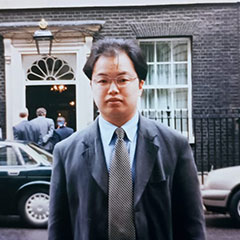14/09/2011
The Closer, the Clearer
3. Placement of modifiers
3a. As close as possible to the word(s) the modifier describes
A primary means of showing the relationship of words is their position in a sentence. The more closely related the parts, the more closely they should be placed together. Hence, a modifier should be placed as close as possible to the modified so that it is clear which word(s) the modifier describes.
Non-restrictive modifiers are enclosed by commas while restrictive modifiers are not since they are essential in the sentence.
- Victor, who was the most articulate and the wisest among the candidates, won the election.
(The modifier enclosed by the commas is additional. Without it, Victor is still identifiable.)
- The candidate who was the most articulate and the wisest won the election.
(The modifier is necessary for identifying who the candidate was. That is, the modifier restricts the application of the word – “candidate” to one person.)

3b. Dangling participles
Dangling participles is one of the most commonly tested areas in both Identifying Sentence Errors and Improving Sentences sections. I have discussed dangling participles in my article published on 16 Aug 2011. Please read it again before you move on to the following.
In summary, there are 2 points you need to pay particular attention to:
- Whenever a sentence starts with a participial phrase followed by a comma, check if the subject of the clause after the comma is also the subject of the participial phrase.
- Note that the participial phrase can be active (present participle/-ing form) or passive (part participle/p.p.).


If you have any questions or enquires, feel free to visit my facebook page: www.facebook.com/allylo.english.
(Next Tue: Improving Sentences cont’d)
《經濟通》所刊的署名及/或不署名文章,相關內容屬作者個人意見,並不代表《經濟通》立場,《經濟通》所扮演的角色是提供一個自由言論平台。
送禮活動浪接浪!想緊貼著數活動消息?即Like etnet Facebook專頁!► 立即讚好




















































































































































